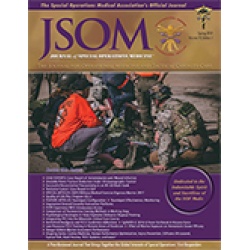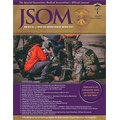Limb Tourniquet Configuration: Preliminary Investigation of Problems and Principles
Kragh JF, Aden JK, Dubick MA 19(1). 35 - 43 (Journal Article)
Background: A tourniquet's readiness during emergencies depends on how it is configured. We investigated configuration so ways of improving readiness can be developed. Methods: This study was conducted at the Institute of Surgical Research in 2018 as sequential investigations by one user of Combat Application Tourniquets (C-A-Ts) in a band-and-rod design. Results: Each tourniquet comes packaged with paper instructions for use, which include directions on how to configure it in preparation for caregiving. The paper and video instructions for use omit tensioning of the tourniquet in configuration, and the video misconfigured a time strap over the rod. In first-aid classrooms, we saw unwitting learners troubleshoot that misconfiguration. Problems with configuration were also seen in caregiving and with tourniquets stowed in kits. In deliberate practice, we self-applied a tourniquet to a thigh. In configuration after each of 100 uses, tourniquet elongation due to tensioning averaged 2.4 in was important for restoring the tourniquet to its full length. During configuration, if the C-A-T's stabilization plate slid along the band, out of position, the user slid the plate back into position. In various ways of testing other C-A-Ts, elongations averaged from 0.4 in to 0.9 in, depending on whether the tourniquet was self-applied or applied to a firm manikin. Elongation increments accrued as the tourniquet's band flattened. Configuration time averaged 22 seconds, and accrued experience improved the compactness of configuration. Conclusion: People are too often unreliable at putting C-A-Ts into the optimal configuration for use. That ready-to-use configuration includes the tourniquet being at its full length, having the stabilization plate positioned correctly along the band, and having the strap fastened to its clip of origin. When used, tourniquets had normal, small elongations in part due to band flattening. This tourniquet study showed the importance of optimal configuration to first-aid readiness practices.


 English
English 




